Milwaukee M18 BPFP-CCST Handleiding
Milwaukee
Niet gecategoriseerd
M18 BPFP-CCST
Bekijk gratis de handleiding van Milwaukee M18 BPFP-CCST (8 pagina’s), behorend tot de categorie Niet gecategoriseerd. Deze gids werd als nuttig beoordeeld door 80 mensen en kreeg gemiddeld 3.7 sterren uit 40.5 reviews. Heb je een vraag over Milwaukee M18 BPFP-CCST of wil je andere gebruikers van dit product iets vragen? Stel een vraag
Pagina 1/8

OPERATOR'S MANUAL
Cat. No.
WARNING
M18TM SWITCH TANK CONCRETE CHEMICAL TANK SPRAYER,
WATER TANK SPRAYER, CHEMICAL TANK SPRAYER
To reduce the risk of injury, user must read and understand operator's manual.
M18 BPFPCCS, M18 BPFPCS, M18 BPFPWS, 491628PS,
491628CS, 491628WS
Cat. no.
M18 BPFPCCS
M18 BPFPCS
Cat. no.
M18 BPFPWS

2
WARNING
WORK AREA SAFETY
PERSONAL SAFETY
•
IMPORTANT SAFETY INSTRUCTIONS
Read all safety warnings,
instructions, illustrations and
specifications provided with this power tool.
Failure to follow all instructions listed below may
result in electric shock, fire and/ or serious injury.
Save all warnings and instructions for future
reference.
The term "power tool" in the warnings refers to
your mains-operated (corded) power tool or
battery-operated (cordless) power tool.
Keep work area clean and well lit. Cluttered or
dark areas invite accidents.
Do not operate power tools in explosive
atmospheres, such as in the presence of
flammable liquids, gases or dust. Power tools
create sparks which may ignite the dust or fumes.
Keep children and bystanders away while
operating a power tool. Distractions can cause
you to lose control.
•
•
ELECTRICAL SAFETY
Power tool plugs must match the outlet. Never
modify the plug in any way. Do not use any
adapter plugs with earthed (grounded) power
tools. Unmodified plugs and matching outlets will
reduce risk of electric shock.
Avoid body contact with earthed or grounded
surfaces, such as pipes, radiators, ranges and
refrigerators. There is an increased risk of
electric shock if your body is earthed or grounded.
Do not expose power tools to rain or wet
conditions. Water entering a power tool will
increase the risk of electric shock.
Outdoor use. Do not expose to rain; store
indoors.
Do not abuse the cord. Never use the cord for
carrying, pulling or unplugging the power tool.
Keep cord away from heat, oil, sharp edges or
moving parts. Damaged or entangled cords
increase the risk of electric shock.
When operating a power tool outdoors, use an
extension cord suitable for outdoor use. Use
of a cord suitable for outdoor use reduces the risk
of electric shock.
If operating a power tool in a damp location is
unavoidable, use a residual current device
(RCD) protected supply. Use of an RCD reduces
the risk of electric shock.
•
•
•
Stay alert, watch what you are doing and use
common sense when operating a power tool.
Do not use a power tool while you are tired or
under the influrence of drugs, alchohol or
medication. A moment of inattention while
operating power tools may result in serious
personal injury.
Use personal protective equipment. Always
wear eye protection. Protective equipment such
as a dust mask, non-skid safety shoes, hard hat or
hearing protection used for appropriate conditions
will reduce personal injuries.
Prevent unintentional starting. Ensure the
switch is in the off-position before connecting
to power source and/or battery pack, picking
up or carrying the tool. Carrying power tools
with your finger on the switch or energising power
tools that have the switch on invites accidents.
Do not overreach. Keep proper footing and
balance at all times. This enables better control
of the power tool in unexpected situations.
Dress properly. Do not wear loose clothing or
jewelry. Keep your hair and clothing away
from moving parts. Loose clothes, jewelry or
long hair can be caught in moving parts.
•
•
•
•
•
•
POWER TOOL USE AND CARE
Do not force the power tool. Use the correct
power tool for your application. The correct
power tool will do the job better and safer at the
rate for which it was designed.
Do not use the power tool if the switch does
not turn it on and off. Any power tool that cannot
be controlled with the switch is dangerous and
must be repaired.
Disconnect the plug from the power source
and/or remove the battery pack, if detachable,
from the power tool before making any
adjustments, changing accessories, or storing
power tools. Such preventive safety measures
reduce the risk of starting the power tool
accidentally.
Store idle power tools out of the reach of
children and do not allow persons unfamiliar
with the power tool or these instructions to
operate the power tool. Power tools are
dangerous in the hands of untrained users.
Maintain power tools and accessories. Check
for misalignment or binding of moving parts,
breakage of parts and any other condition that
may affect the power tool’s operation.
Keep cutting tools sharp and clean. Properly
maintained cutting tools with sharp cutting edges
are less likely to bind and are easier to control.
Use the power tool, accessories and tool bits
etc. in accordance with these instructions,
taking into account the working conditions
and the work to be performed. Use of the power
tool for operations different from those intended
could result in a hazardous situation.
Keep handles and grasping surfaces dry,
clean and free from oil and grease. Slippery
handles and grasping surfaces do not allow for
safe handling and control of the tool in unexpected
situations.
•
•
•
•
BATTERY TOOL USE AND CARE
Recharge only with the charger specified by
the manufacturer. A charger that is suitable for
one type of battery pack may create a risk of fire
when used with another battery pack.
Use power tools only with specifically
designated battery packs. Use of any other
battery packs may create a risk of injury and fire.
When battery pack is not in use, keep it away
from other metal objects, like paper clips,
coins, keys, nails, screws or other small metal
objects, that can make a connection from one
terminal to another. Shorting the battery
terminals together may cause burns or a fire.
Under abusive conditions, liquid may be
ejected from the battery; avoid contact. If
contact accidentally occurs, flush with water.
If liquid contacts eyes, additionally seek
medical help. Liquid ejected from the battery may
cause irritation or burns.
Do not use a battery pack or tool that is
damaged or modfied. Damaged or modified
batteries may exhibit unpredictable behaviour
resulting in fire, explosion or risk of injury.
•
•
•
•
•
•
•
•
•
Do not let familiarity gained from frequent use
of tools allow you to become complacent and
ignore tool safety principles. A careless action
can cause severe injury within a fraction of a
second.
Remove any adjusting key or wrench before
turning the power tool on. A wrench or a key left
attached to a rotating part of the power tool may
result in personal injury.
If devices are provided for the connection of
dust extraction and collection facilities,
ensure these are connected and properly
used. Use of dust collection can reduce
dust-related hazards.
•
•
•
•
•
•
•

3
PPE
SPECIFIC SAFETY RULES FOR
BACKPACK SPRAYER
WARNING
Risk of fire or explosion. Do
•
•
•
•
•
•
•
•
•
•
•
WARNING
Some dust created by power
sanding, sawing, grinding,
drilling, and other construction activities contains
chemicals known to cause cancer, birth defects or
other reproductive harm. Some examples of these
chemicals are:
SAVE THESE INSTRUCTIONS
SYMBOLOGY
not spray flammable liquids
such as gasoline. Do not use tool around
spark, flame, or smoke. Chemical may ignite.
Use the correct tank for your application.
These products are suitable for pesticide
applications (such as insecticides, fungicides,
or herbicides), fertilizers, concrete
applications (such as sealants, curing
compounds and form oil), and water supply
applications, when used in accordance with
these instructions and those supplied with the
chemicals. Do not use bleach, caustic (alkali) self-heating
or corrosive (acid) liquids in this sprayer. Do
not pour hot or boiling liquids into the tank.
These can corrode metal parts or weaken the
tank and hose.
Electric shock hazard. Never spray toward
electrical outlets.
Spray area must be well ventilated to avoid
hazardous fumes build-up.
Avoid spraying on windy days. Spray can be
blown onto people, plants, or objects that
should not be sprayed.
Do not store chemicals in the tank. Chemicals
can degrade seals and hoses. Drain and clean
after each use.
Remove gloves before handling battery packs.
Chemicals are harmful to plastics.
Maintain your power tool. Thoroughly inspect
inside and outside and examine all
components before each use. Check for
cracked and deteriorated hoses, leaks,
clogged nozzles, and missing or damaged
• Iead from lead-based paint
• crystalline silica from bricks and cement and
other masonry products, and
• arsenic and chromium from chemically-treated
lumber.
Your risk from these exposures varies, depending
on how often you do this type of work. To reduce
your exposure to these chemicals: work in a
well-ventilated area, and work with approved
safety equipment, such as those dust masks that
are specially designed to filter out microscopic
particles.
SERVICE
Volts
Direct Current
Read operator's manual
Wear personal protective equipment
(PPE) according to the chemical
manufacturer's instructions.
Wear eye protection.
Wear gloves.
Regulatory Compliance mark (RCM).
This product meets applicable regulatory
requirements.
•
•
Do not expose a battery pack or tool to fire or
excessive temperature. Exposure to fire or
temperature above 130°C (265°F) may cause
explosion.
• Follow all charging instructions and do not
charge the battery pack or tool outside the
temperature range specified in the
instructions. Charging improperly or at
temperatures outside the specified range may
damage the battery and increase the risk of fire.
Have your power tool serviced by a qualified
repair person using only identical replacement
parts. This will ensure that the safety of the power
tool is maintained.
Never service damaged battery packs. Service
of battery packs should only be performed by the
manufacturer or authorised service providers.
WARNING
To personal injury,
reduce the risk of fire,
and product
ADD NAITIO L BATTERY S
AFETY RULES
damage due to short circuit, never immerse your
tool, battery pack or charger in fluid or allow a fluid
to flow i nside them. Corrosive or conductive fluids,
such as seawater, certain industrial chemicals, and
bleach or bleach-containing products, etc., can
cause a short circuit.
•
•
•
•
•
parts. If damaged, have the power tool
repaired before use. Many accidents are
caused by poorly maintained power tools.
Always unplug the charger and remove the
battery pack from the charger or tool before
performing any maintenance, storing, or
draining the tool. Never disassemble the tool,
battery pack or charger. Contact a
MILWAUKEE
® service facility for ALL repairs.
Do not eat or smoke while handling or
operating the tool. After use, wash with hot,
soapy water to help reduce the risk of health
hazards due to exposure to chemicals.
Always use common sense and be cautious
when using tools. It is not possible to anticipate
every situation that could result in a dangerous
outcome. Do not use this tool if you do not
understand these operating instructions or you
feel the work is beyond your capability; contact
MILWAUKEE
® Tool or a trained professional for
additional information or training.
Do not use the battery compartment for
storage.
Maintain labels and nameplates. These carry
important information. If unreadable or missing,
contact a MILWAUKEE
® service facility for a
replacement.
When transporting and handling sprayers always
secure the sprayer during transportation to
prevent loss, damage or injury.
Chemical sprayers shall be used only with
plant protection products approved by
local/national regulatory authorities for plant
protection products for use with backpack
sprayers.
•
To reduce the risk of fire, personal injury, and
product damage due to a short circuit, never
immerse your tool, battery pack or charger in
fluid or allow a fluid to flow inside them. Do
not place or store tool where it can fall or be
pulled into a tub or sink. Corrosive or conduc-
tive fluids, such as seawater, certain industrial
chemicals, and bleach or bleach containing
products, etc., can cause a short circuit.
Product specificaties
| Merk: | Milwaukee |
| Categorie: | Niet gecategoriseerd |
| Model: | M18 BPFP-CCST |
Heb je hulp nodig?
Als je hulp nodig hebt met Milwaukee M18 BPFP-CCST stel dan hieronder een vraag en andere gebruikers zullen je antwoorden
Handleiding Niet gecategoriseerd Milwaukee

15 September 2025
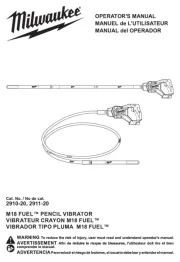
1 September 2025
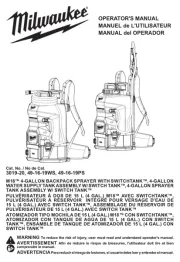
1 September 2025
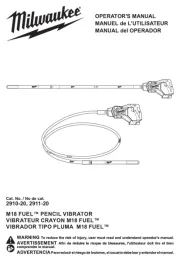
1 September 2025
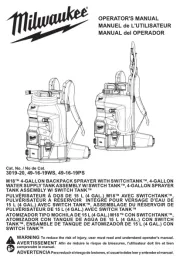
1 September 2025
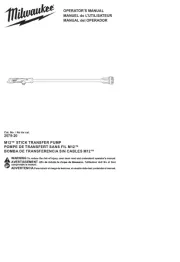
19 Augustus 2025
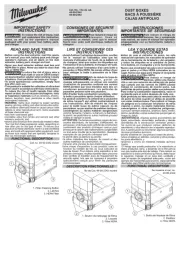
19 Augustus 2025
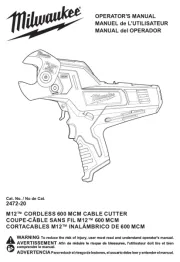
19 Augustus 2025

18 Augustus 2025

18 Augustus 2025
Handleiding Niet gecategoriseerd
- Ives
- Boehringer Ingelheim
- Qanba
- Ground Zero
- Ednet
- Aligator
- Stabo
- Aprilia
- Tivoli Audio
- Roxio
- Faytech
- Sani-Lav
- ClimeMET
- Tech 21
- Dangerous Music
Nieuwste handleidingen voor Niet gecategoriseerd
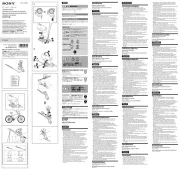
16 September 2025
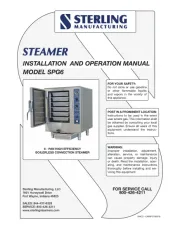
16 September 2025
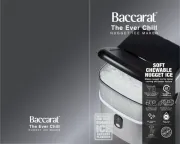
16 September 2025
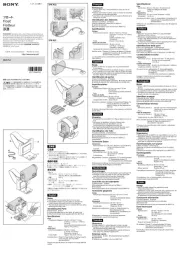
16 September 2025
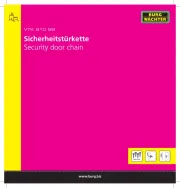
16 September 2025
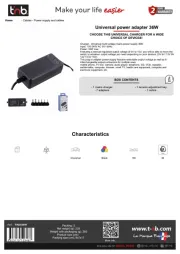
16 September 2025
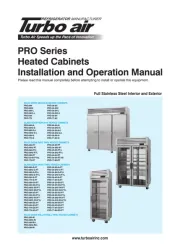
16 September 2025
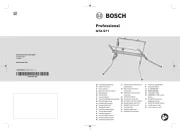
16 September 2025
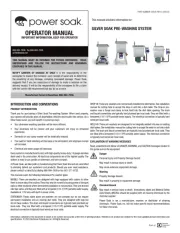
16 September 2025
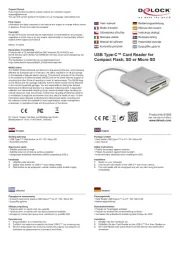
16 September 2025